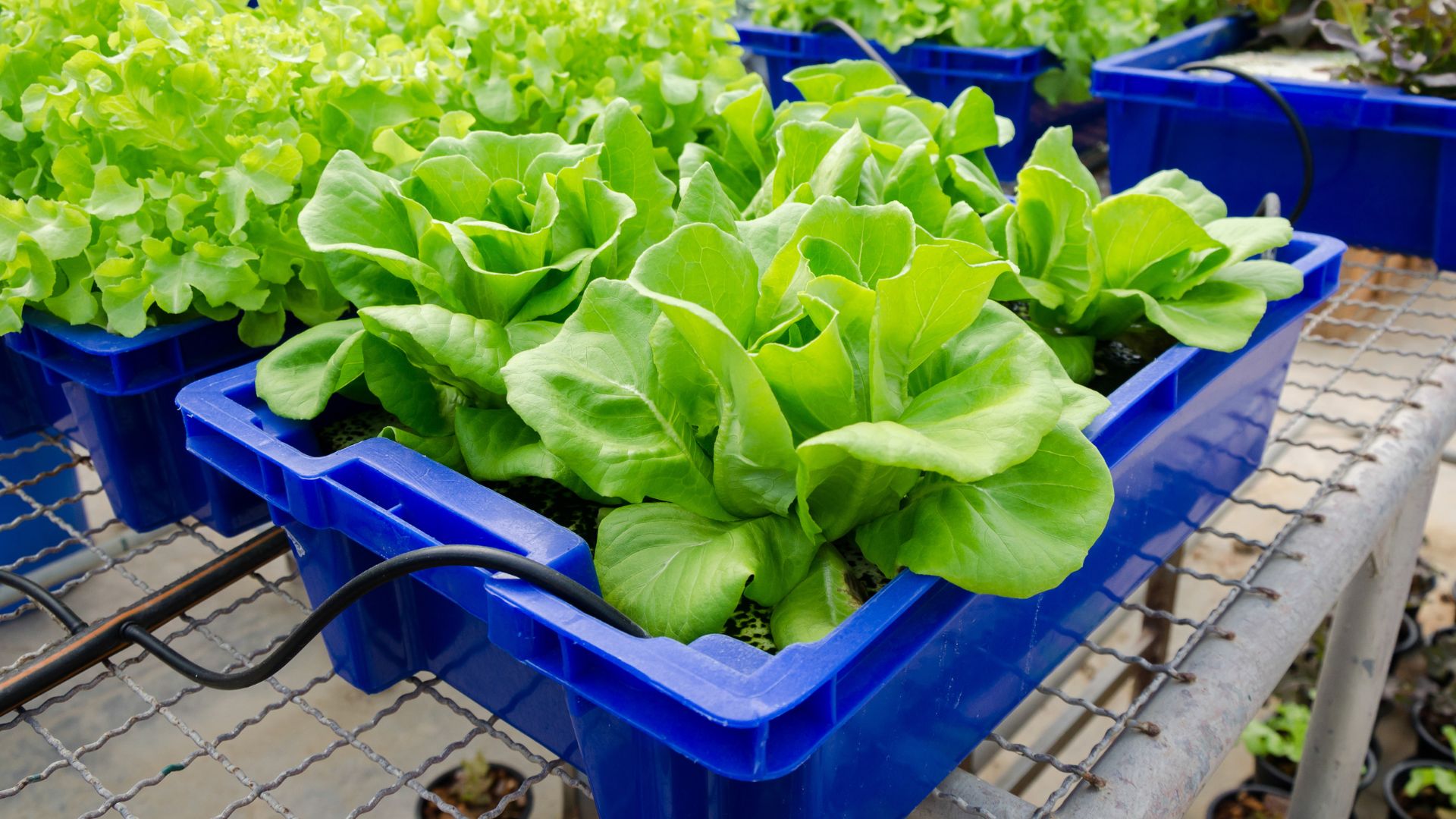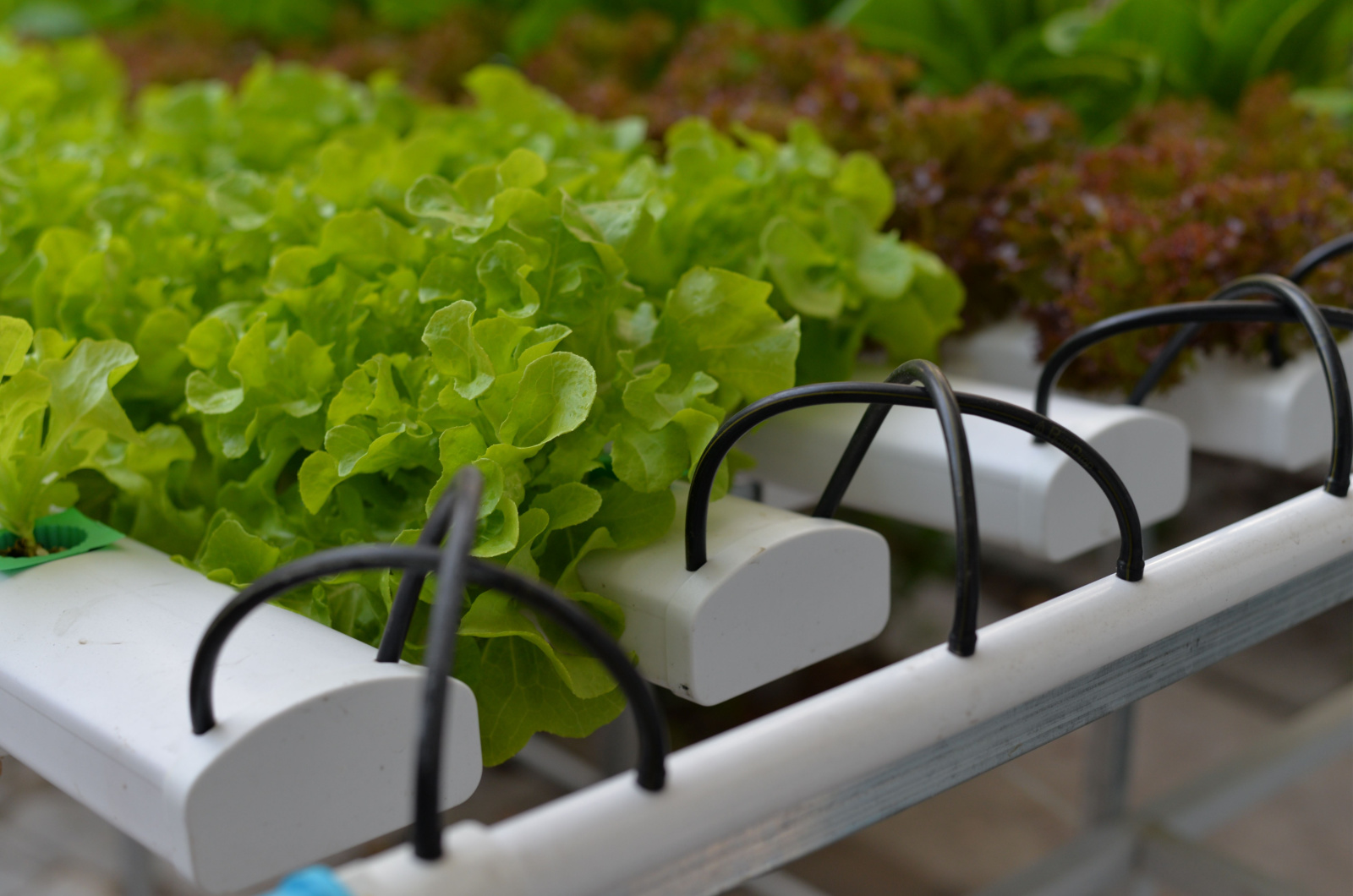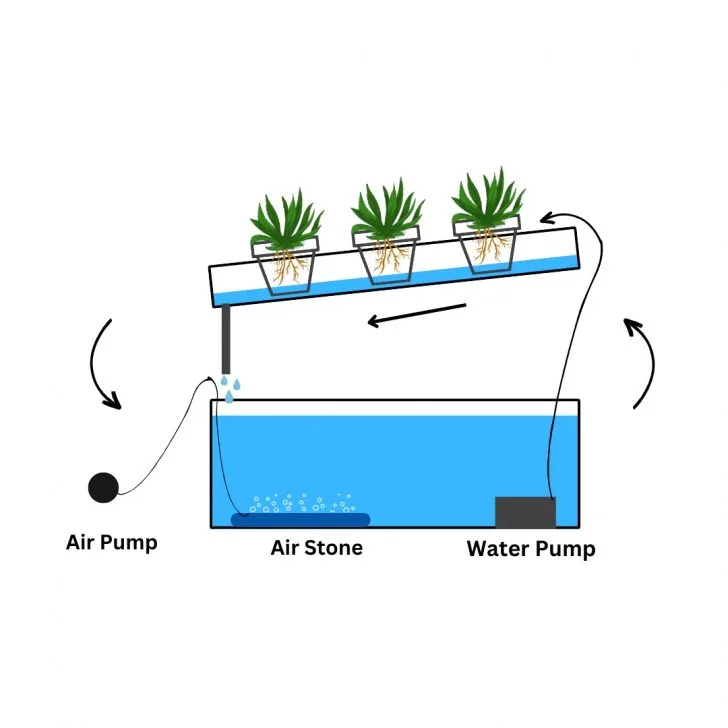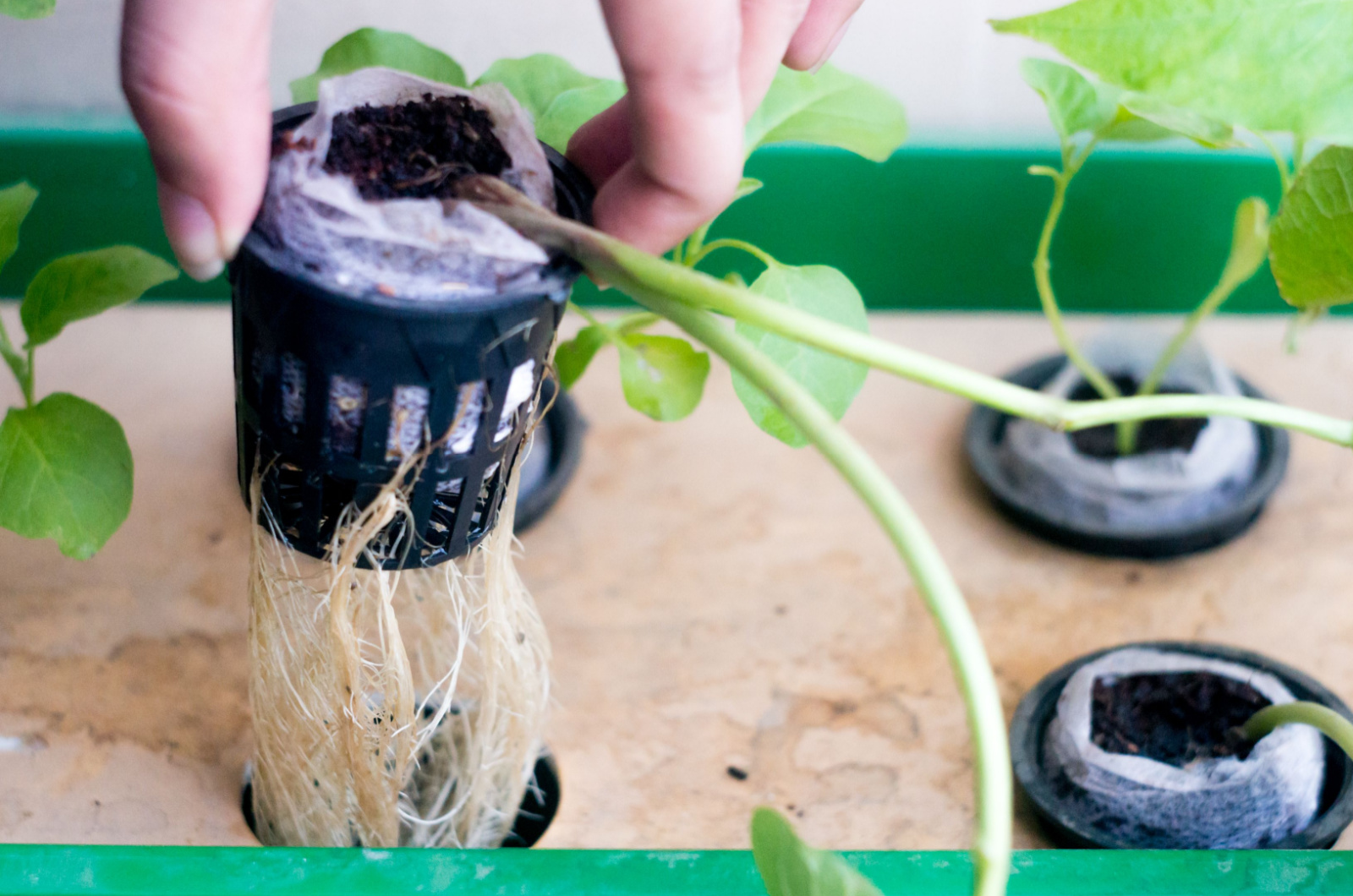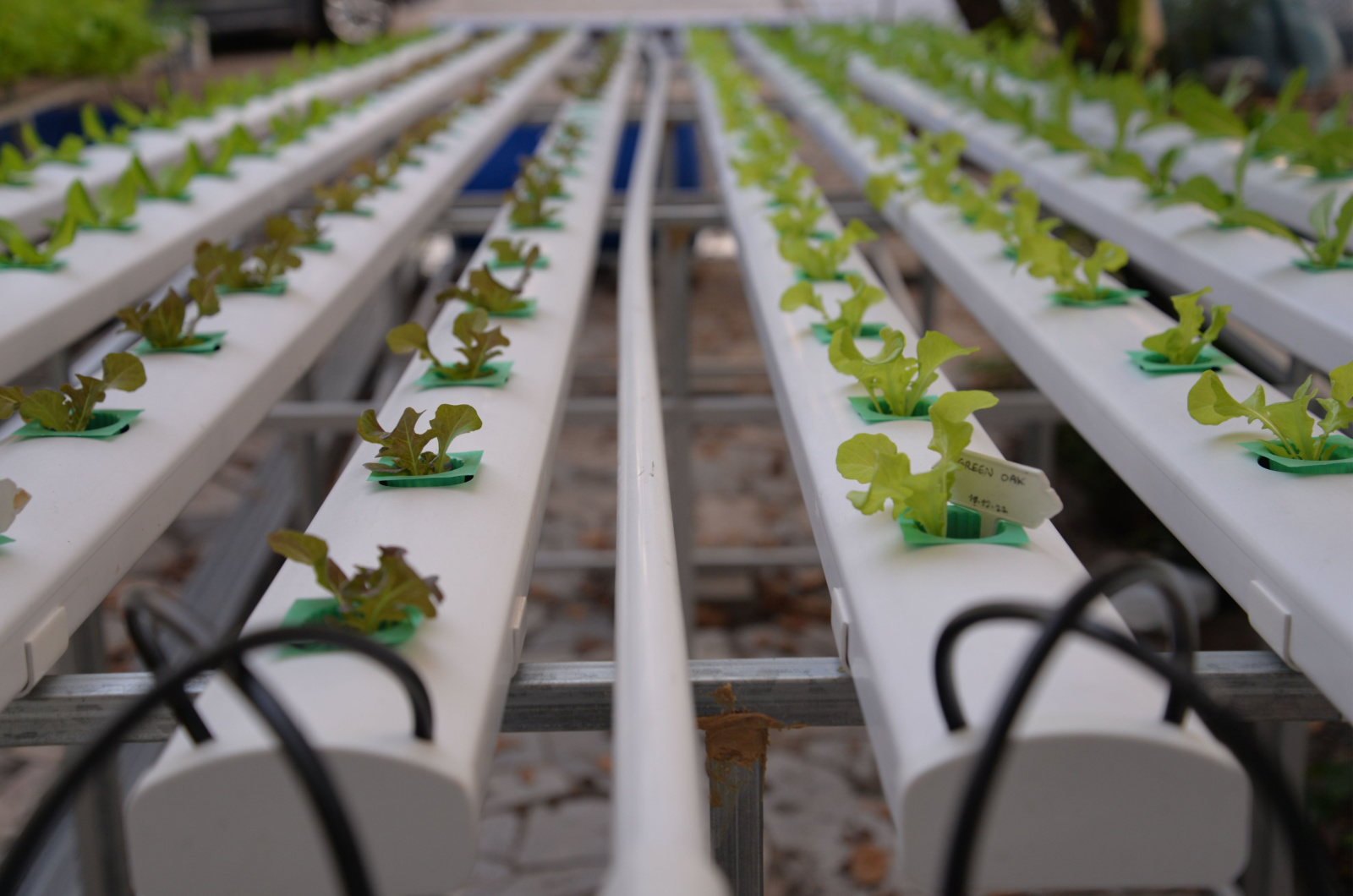The Nutrient film technique (NFT) is a great method of growing flowers, fruits, and vegetables hydroponically all year round.
This particular hydroponic system is quite popular because it is simple to set up and will increase your yield without too much work. And it doesn’t require that much maintenance!
So why not work less and get a higher yield?
I’m down for it, are you?
What Is The Nutrient Film Technique?
There are many hydroponic setup varieties, and NFT is just one of them. It is an active set up, which means that the nutrient solution is moving through the tubes (channel).
The plant roots are in the air and, once the channel fills in with the solution, they can absorb the moisture and minerals they need for their growth and development.
Pros And Cons Of The Nutrient Film Technique
Just like anything else in the gardening world, even the famous NFT has its benefits and drawbacks.
Here are some things that can help you understand this technique better.
Advantages Of The NFT
• Saves water. NFT has shallow tubes and channels that require a lot less water than other hydroponic systems.
• Minimal growing medium needed. This technique doesn’t really need growing medium to help plants thrive. We only add it to support plants so that they don’t tip over. For that reason, you don’t need to use too much growing medium.
• Improves plant health. This automated hydroponics system brings you healthy plants year round. It reduces the risk of root rot and nutrient loss. The latter is caused by the soil binding the nutrients, and since that medium is eliminated, more nutrients can reach plant roots.
• Easy plant access. Everything is visible with the NFT, so you can monitor your plants’ health and their roots whenever you want. This allows you to stay ahead of any problem.
• Simple to install. This hydroponic system doesn’t require too much equipment and you can DIY most of it, making it simple and affordable to build.
• Saves space. You can stack tubes upon tubes when it comes to the NFT, which allows you to utilize the space the best you can and grow more plants than with other hydroponic systems or traditional soil growing.
• Eco-friendly. Since this set up saves water and doesn’t utilize soil as a growing medium, we can say it is fairly eco-friendly. And you can make it even more environmentally safe by using organic nutrient solutions and products.
Disadvantages Of The NFT
Although NFT has numerous benefits, there are some disadvantages you have to be aware of before setting it up.
• More support for large plants. This system isn’t ideal for larger plants and those with heavy fruits. They need a lot more support in terms of growing medium and stakes to prevent them from tipping over.
• Not suitable for root vegetables. You won’t be able to grow carrots, potatoes, parsnips, radishes, beets, and other root crops. They don’t have enough room in the shallow tubes to develop their tubers.
• Root block. If you have plants that develop extensive root systems, they can block the channels, preventing the nutrient solution from reaching other plants.
• Potential for breakdowns. Since this system involves pumps and filters, there is a great potential for mechanical or electrical failure. This can be detrimental to plants, so you need to monitor the system regularly to stay ahead of the problems.
• Active system. NFT is an active system, meaning the nutrient solution has to circulate constantly. That means it needs to have power at all times, which may increase your electricity bill significantly.
How Does It Work?
In the NFT, plants are in the mesh pots placed in shallow tubes or trays. Their roots are in the built-in channels through which the nutrient solution passes.
Once the channel fills with the solutions, the roots can absorb the moisture and nutrients. Later, the channels empty and there’s no liquid in them, allowing the plants to uptake oxygen and preventing root rot.
The growing tubes are placed at an angle so that the gravity can work for you and help empty the channels.
There’s a tank below or next to the tubes that holds the nutrient solution. It contains a water pump which fills the channels, and an air pump and stone which oxygenate the water, reducing the potential risk for root rot even more.
In conclusion, the nutrient solution is pumped into the channels from the reservoir thanks to the water pump and then it slowly drains back into the tank due to angled tubes and gravity.
The air pump and stone oxygenate that water and the whole process is repeated again and again.
How To Set It Up
NFT is the perfect hydroponic system for beginners because it is quite simple to set up. You can DIY the entire process or get fancy equipment if you don’t have the time to think of everything.
Reservoir
When choosing a tank for your NFT, ensure it is made of suitable material for gardening. You will eat the plants you grow, so don’t choose something that will leach chemicals your vegetables will absorb with the solution.
Glass aquariums work great for this purpose, but you should cover it with dark sheets, paper, or dye it. This will block the sunlight from penetrating it and reduce algae growth.
Channels
I like to use PVC pipes to make my channels. I just cut the holes through which the plants’ roots will come into contact with the nutrient solution and space them equally.
At this stage, think of the racks you’ll use to hold your pipes. You can stack them vertically or horizontally, whichever suits you best.
Vertical framing is great for smaller spaces because you can utilize the height, too.
Just don’t forget to angle the channels so that they can drain the nutrient solution. Also, you will need to cut a small hole at the bottom of the last PVC pipe to serve as a drainage hole.
Install a drainage pipe through which the nutrient solution can enter the reservoir.
Opaque Tubes
When choosing tubes for the channels, drainage pipes, and any other part of the NFT system, make sure they are opaque.
Translucent and pale tubes encourage algae growth. They compete with plants for moisture and nutrients, and can possibly be dangerous (though that’s not common).
Air Pump And Stone
An air pump on the outside of the tank and an air stone in it are all it takes to oxygenate the water and make it perfect for your plants.
If you have a small NFT system, you can use just one pump and stone, but larger setups require more air stones for proper oxygenation.
Water Pump
This pump goes into the tank and it needs to have enough power to be able to pump the nutrient solution into the channel.
Vertical NFTs or large setups need high-quality and heavy-duty pumps to work properly.
But if you have a small tank (no larger than 25 gallons), you can use a regular aquarium pump that pumps 250 gallons of water per hour.
Mesh Pots
These are an essential part of NFT systems because they allow plant roots to touch the nutrient solution in the channel.
Place your plant in it and make sure the roots can exit the nets, then fill them with a hydroponic medium, such as LECA, to support the plant as it grows.
Choose ones that fit through the holes in the tubing and can hang in the air without touching the bottom of the channel.
Growing Medium
In hydroponic systems, there’s no need for classical soil mediums. However, you still need something to hold plants in place. You can use coco coir for hydroponics, LECA, pebbles, and similar materials to support your plants.
For NFT, though, the best growing mediums are those that don’t hold too much water, such as LECA or tiny rocks.
Nutrient Solution
You can use just about any fertilizer for hydroponics. You need to find hydroponic plant food and use it according to the manufacturer’s instructions.
It will create optimal pH values that allow ideal absorption of nutrients and moisture.
I always go for organic variants since they seem more safe, especially for my vegetables.
There are numerous options on the market, just make sure they are from a reliable source.
Of course, plants may need different nutrients at different growing stages so bear that in mind when choosing the right hydroponic fertilizer.
As a general rule, go for nitrogen-rich food during vegetative growth and then switch to a fertilizer rich in phosphorus and potassium before flowering. These nutrients will provide optimal nutrition for producing high quality flowers and fruits.
Here are some tips that can help you build your NFT hydroponic system:
Plants You Can Safely Grow In NFT
There are many hydroponic vegetables, flowers, and fruits you can grow in NFT. Generally, anything without tubers or a tap root can thrive in this system.
However, lightweight plants with shallow root systems are the best because there’s no risk of them tipping over.
Leafy greens are an obvious choice. Lettuce, spinach, bok choy, etc. thrive in the NFT. You can also grow moisture-loving herbs such as basil and you won’t have many issues with it.
That said, there’s no reason why larger plants, climbers, and fruiting plants won’t grow in this system. They do pose a bit of a challenge, but you can make it work with some adaptations.
Lower-growing fruiting plants, such as strawberries, can easily grow in the NFT because they don’t need a lot of support. The fruits will hang from the sides, balancing the plant and allowing you to have a clean and easy harvest.
Large fruit-growing plants are quite a challenge to grow in the NFT, but it can be done. Peppers and tomatoes, for instance, require a lot of support so that they don’t tip over. You can easily stake them, but it will take a long time, especially if you have many plants.
NFT Maintenance
The nutrient film technique system requires less maintenance than some other hydroponic setups, but it still needs regular cleaning and check up.
You will have to monitor your pumps (just like all underwater ones) for mineral deposits. Place them where you can have easy access to them and replace worn out parts to prevent complete failure.
Such breakage can be detrimental to your plants, even if it lasts for only a couple of hours.
The next thing you need to keep your eye on is the drain. Check it regularly and clean any plant, root, and growing medium debris as it can get stuck and block the drainage.
And don’t forget to refresh the nutrient solution every 7-10 days to provide proper pH levels and suitable hydration and nutrition to your plants.
Finally, you will have to deep clean your NFT system after switching crops. This will prevent algae growth and keep your new vegetables safe from developing some kind of infection.
If your previous crop was completely healthy, you can clean your NFT setup with warm soapy water. But if some of your plants were ill, disinfect it properly to prevent the transfer of the bacteria or fungi onto your new plants.
This is also a good opportunity to check your pumps and drains and clean them thoroughly.

